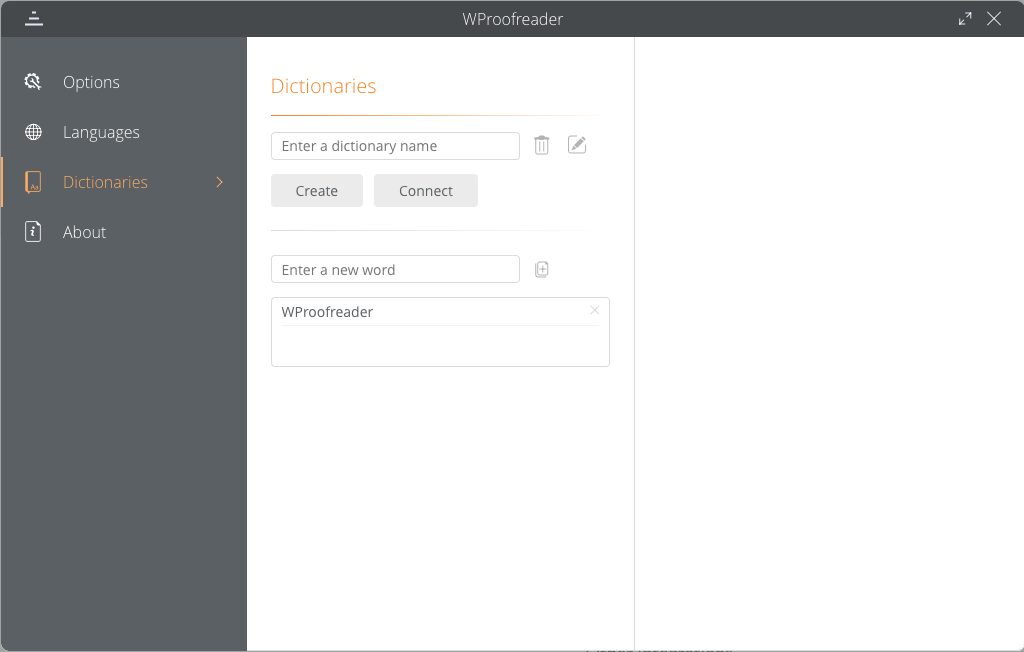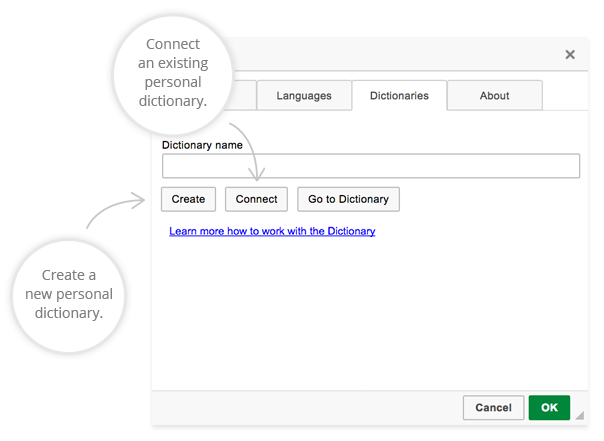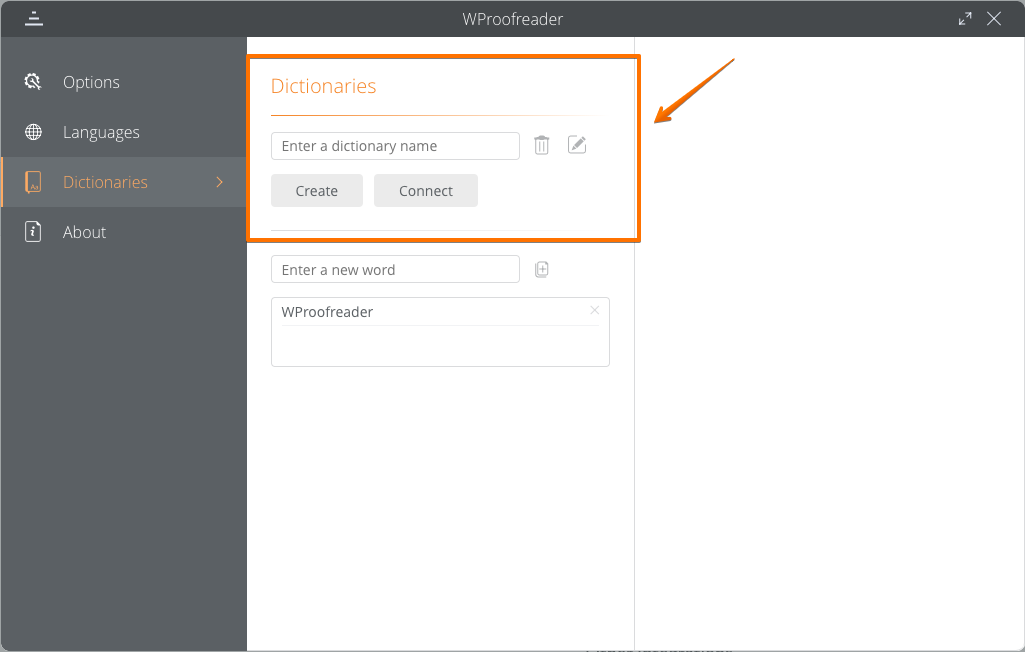2. Personal User Dictionary User Interface
2.1. Personal User Dictionary Interface in WProofreader

2.2. Personal User Dictionary Interface in SCAYT plugin for CKEditor 4


3. Predefined Personal User Dictionary
Example 3.1. Setting up a Predefined Personal User Dictionary in WProofreader
<script type="text/javascript" src="https://svc.webspellchecker.net/spellcheck31/wscbundle/wscbundle.js"></script>
...
<script>
window.WEBSPELLCHECKER_CONFIG = {
autoSearch: true,
enableGrammar: true,
serviceId: 'your-service-ID',
userDictionaryName: 'your_user_dictionary_name'
};
</script> |
Using disableDictionariesPreferences option you can also hide the section with the dictionary settings to prevent end users from removing or disabling the dictionary (the section is shown below). To do so, add one more option to WProofreader configuration:

<script type="text/javascript" src="https://svc.webspellchecker.net/spellcheck31/wscbundle/wscbundle.js"></script>
...
<script>
window.WEBSPELLCHECKER_CONFIG = {
autoSearch: true,
enableGrammar: true,
serviceId: 'your-service-ID',
userDictionaryName: 'your_user_dictionary_name',
disableDictionariesPreferences: true,
};
</script> |
Example 3.2. Setting up a Predefined User Dictionary in SCAYT plugin for CKEditor 4
config.scayt_customerId: "your encrypted customer ID (activation key)", config.scayt_autoStartup = true; config.grayt_autoStartup = true; config.scayt_sLang ="en_US"; config.scayt_userDictionaryName='user_dictionary_name'; |